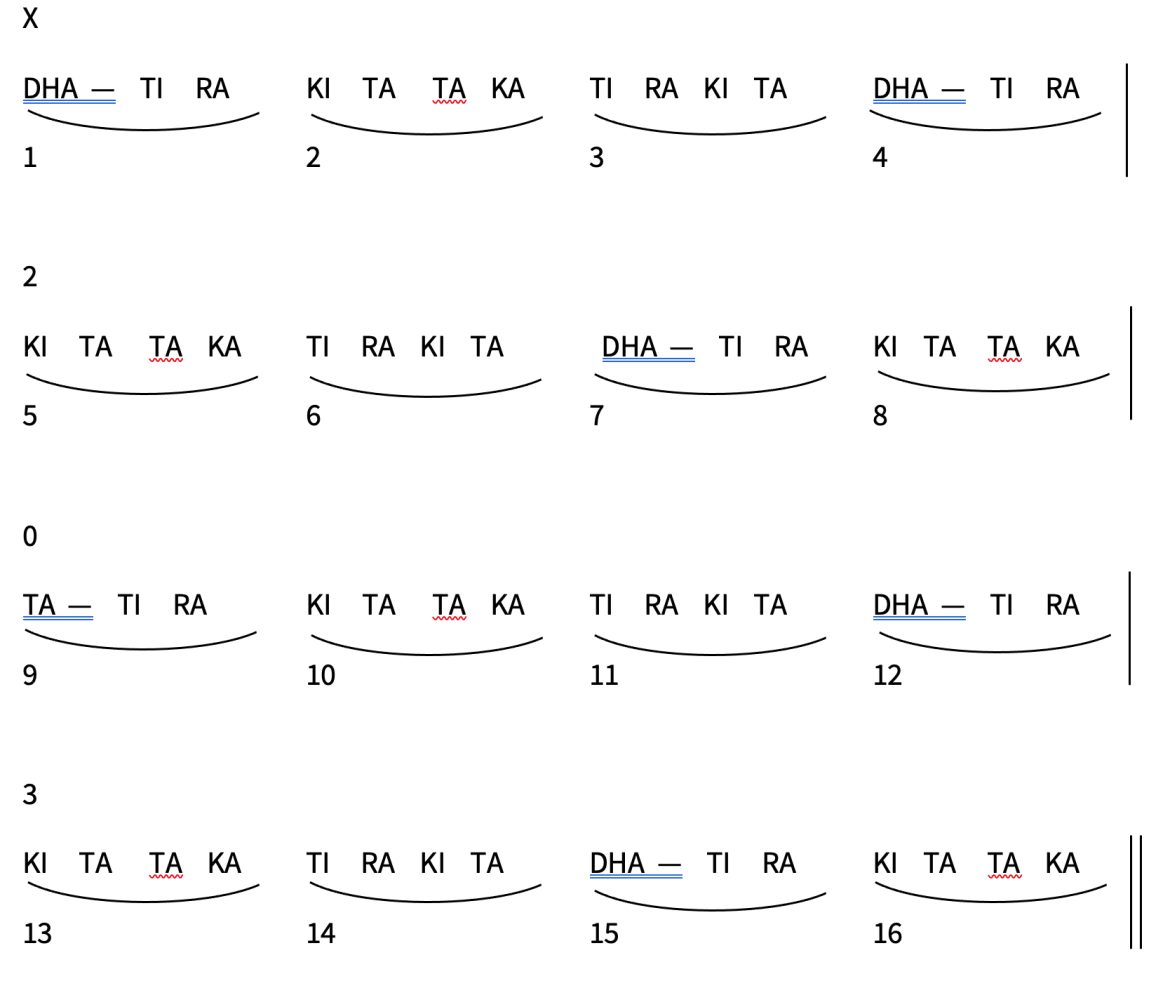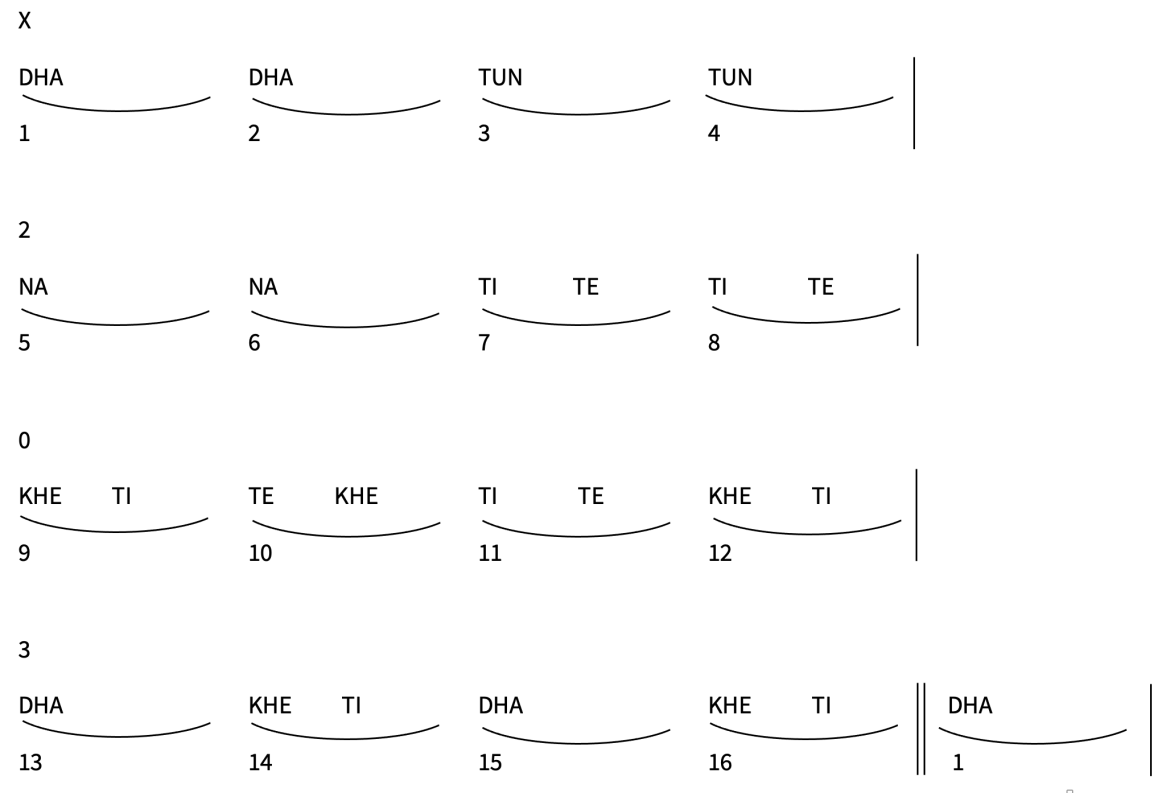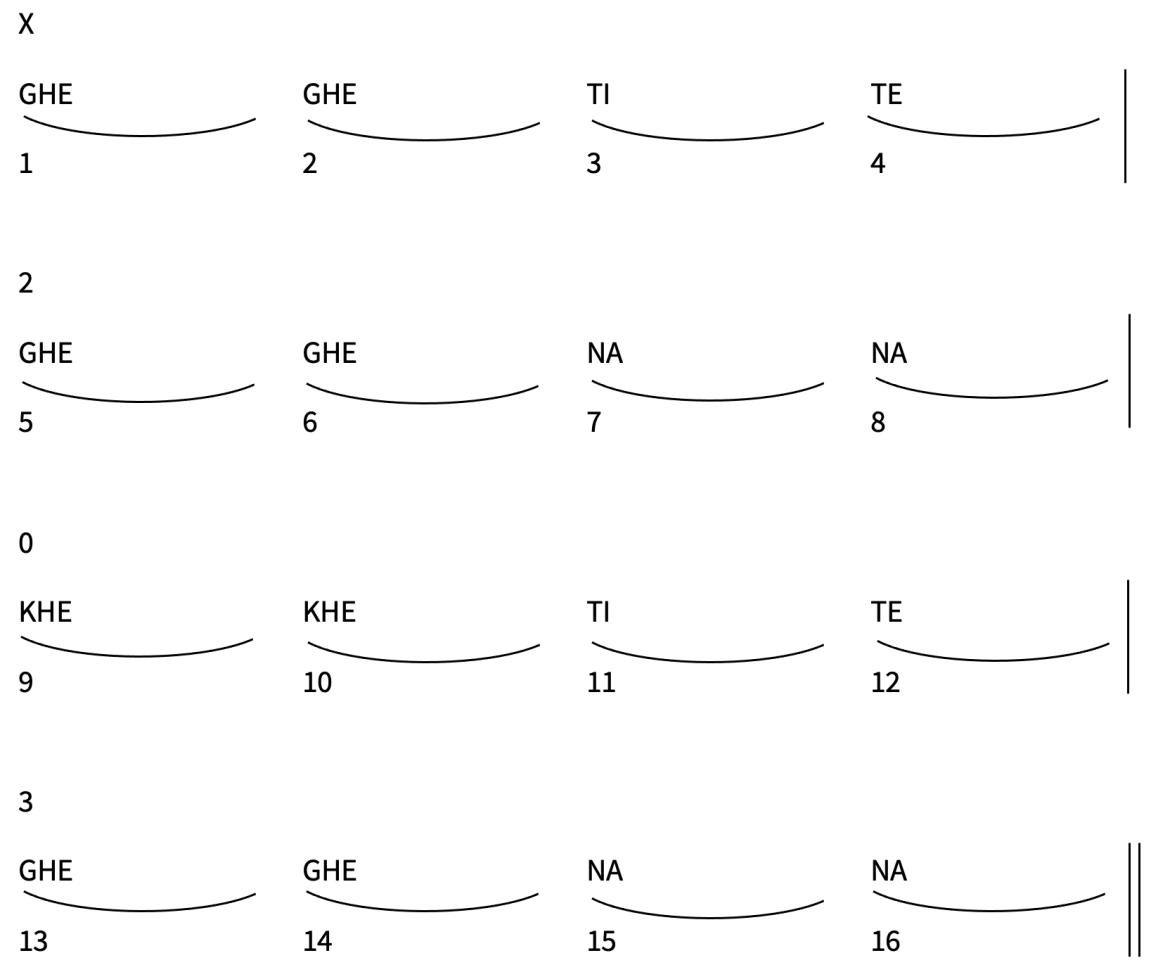Hand placement, coordination and tonal quality (with exercises)
- Play a range of double strokes with single strokes, including the TITE KITA/TIRE KITA closed sound with both drums
- Play the bols DHA and TUN
Show learners how to play the TITE KITA, with four bols starting with two/three fingers on the small drum (daya), then the index finger on the small drum, then flat hand on the large drum (baya), then back to three fingers on the small drum.
Practise the phrase TITE KITA by teaching variations, for example:
- KITA TAKE – Variation 1
- TIRE KITA TAKE – Variation 2
- TAKE TIRE KITA TAKE – Variation 3
Discuss with learners how to achieve a closed sound that does not resonate. Draw attention to the hand position, ensuring that it is not above shoulder height, and ensure that once the hand strikes the Tabla it remains fixed on the drum.
Telling learners to imagine that they have glue on their hand can help to achieve this.
For TA KE, show learners how to use the index finger to strike the middle of the syahi on the small drum (daya), then the flat hand over the syahi on the large drum (baya).
Demonstrate how to play DHA, a combination of GHE and NA at the same time.
With all of these bols, demonstrate good tonal quality and invite learners to imitate.
Develop the bols TI RE KI TA by playing a suitable exercise in both ekgun (single speed) and dugun (double speed), such as the Rela in Teentaal (16-beat time cycle):

A rela is a composition using fast strokes to create a drum roll effect.
Exercises can also be played in chaugun (quadruple speed) if appropriate.
If learners are finding certain strokes difficult, teachers can adapt exercises as necessary.
Demonstrate how to play TUN: with all fingers raised above the tabla, the tip of the index finger moves downwards to strike the outer edge (kinar). The finger is removed very quickly to allow the skin to resonate.
TUN is sometimes called TU. They are performed exactly the same, but the pronunciation changes according to the context.
Introduce compositions that incorporate TUN, for example, the Paran:

Ask learners to choose ways of playing simple phrases using different accents and dynamics.
Teach four or five variations (palta) on a theme (kaida) such as Kaida 2:

Paltas for this exercise are included in the PDF download here.
With the aid of a metronome or lehra, demonstrate how the theme is played in time. Good tempi to begin with are ekgun at 60bpm and dugun at 120bpm. Encourage learners to perform along with the metronome or lehra at these tempi.
A lehra is a repeating melody that can be used to keep the beat and support counting of the time cycle. Lots of suitable lehras can be found on YouTube.
Explore the progression of this Learning Objective
Continue exploring the current Programme of Study